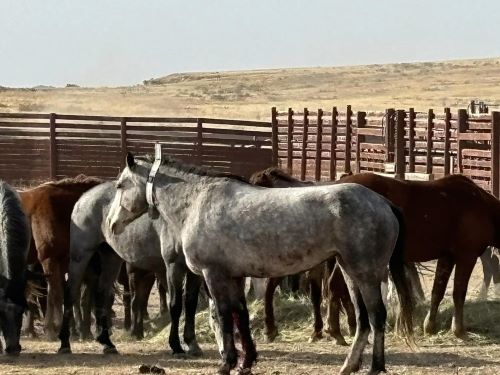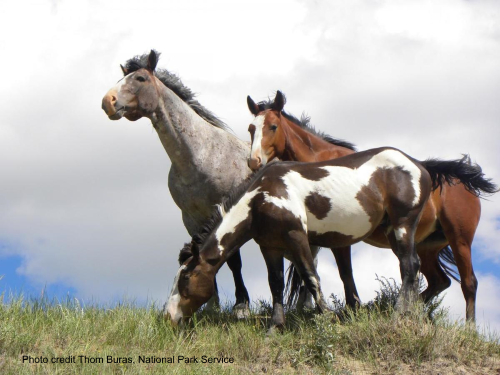Previously we have asked you to submit comments to save wild horses in the Teddy Roosevelt National Park (TRNP). We are sorry to say, we have to ask you to speak up once more. Despite North Dakota Governor Doug Burgum and the state’s Senator John Hoeven pushing to keep the wild horses, the Park Service is still pushing to remove the vast majority of horses or all of them.
TRNP, located in North Dakota, is dedicated in honor of President Theodore “Teddy” Roosevelt and his leadership in conservation policy. While these horses are not protected under Federal law and are referred to as “livestock,” they have been cherished cultural icons for decades. When Teddy Roosevelt was young, he visited the area and experienced the magnificence and beauty of the natural landscape which included wild bison and wild horses exhibiting natural wild behaviors — living in family bands, with stallions protecting their families.
The Park Service continues to propose to either get rid of all of the horses or allow only 35-60 — of the nearly 200 horses living in the area — to remain. The Park Service manages the Park for cultural and natural resources and claims to rely on public input for Park management. PLEASE SPEAK UP for these magnificent horses NOW — they truly are CULTURAL ICONS!
Please tell the Park Service the following (in your own words):
- Preserving the Teddy Roosevelt horses MUST be a cornerstone of the Park’s livestock management plan, since they contributed to President Teddy Roosevelt’s wonder at the natural world, leading to his CREATION of the NATIONAL PARK SYSTEM.
- Horses have lived “wild” in TRNP for generations and MILLIONS of Park visitors cherish these animals as an integral part of the cultural heritage of the Badlands.
- These horses must be managed to preserve natural behaviors just as Teddy Roosevelt would have experienced. He would have seen stallions protecting their families, foals with their mothers and aunties, and the entire repertoire of natural “wild” horse behaviors.
- To protect the GENETIC HEALTH of the herd and promote its genetic viability, the minimum population should be 150 or more. By allowing the horses to use additional areas of the TRNP, the herd can – and should – be managed at a HIGHER MINIMUM POPULATION LEVEL.
Your voice makes a difference. Please submit your comments directly to the Park Service by clicking here. The deadline for submitting comments is October 25, 2023.
The Cloud Foundation
www.thecloudfoundation.org


